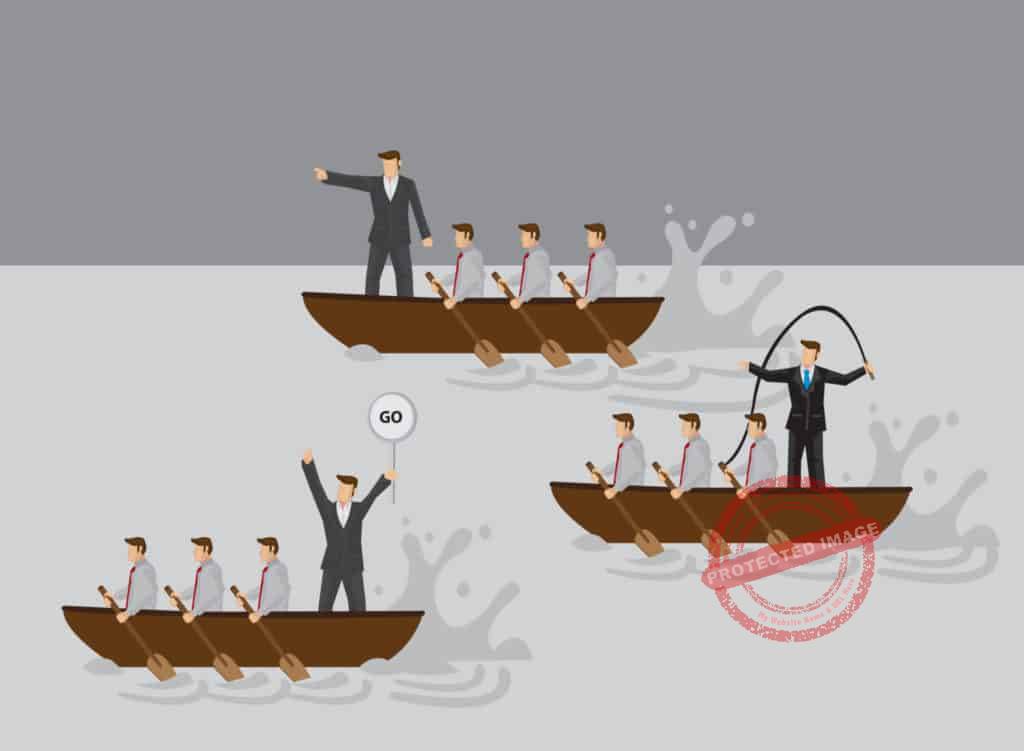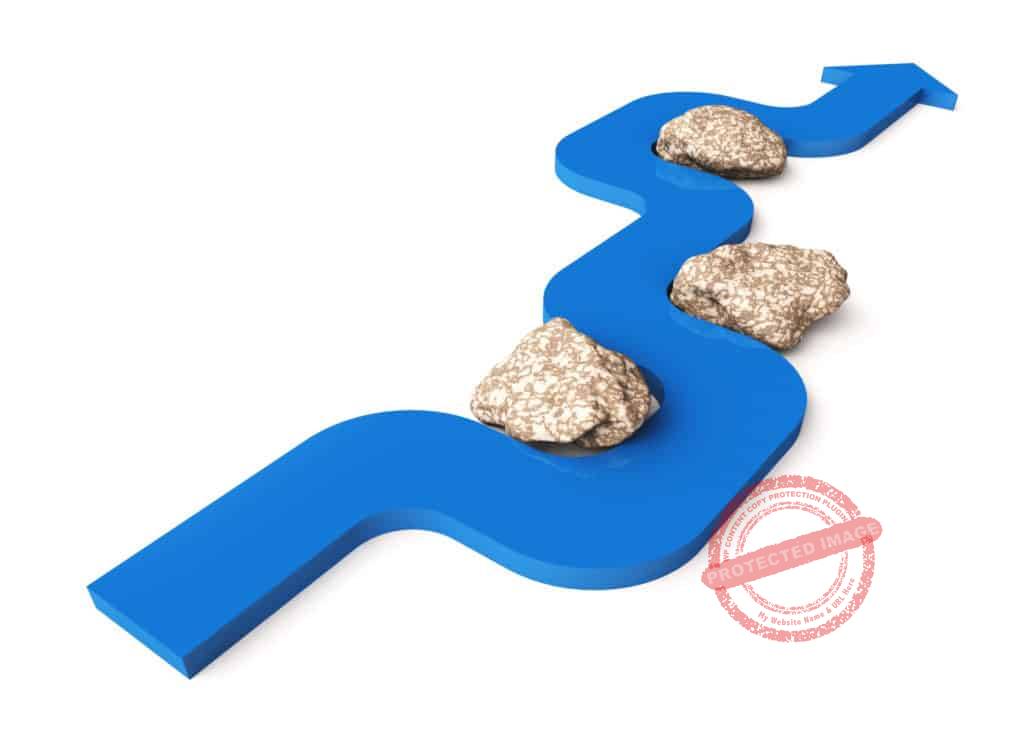Are you a leader? Do you know there are several types of leaders?
Effective leadership comes naturally to some people.
However, if you look closely at great leaders, you will find that most went the extra mile to enhance their natural gifts. They were willing to learn.
It is a good idea to get a good grasp of the different leadership styles in business.
You must know what styles to assume for different situations and for different people.
It is also sensible to find out what type of leadership skills you need to nurture so you can become a more effective leader.
Knowing all of the above will help you develop your leadership skills and become a better leader.
Styles Of Leadership

A leadership style refers to the way a leader motivates, directs, guides, and manages a group of people.
A great leader is one who can effectively motivate others to create, perform, and innovate.
Leaders do not necessarily behave in the same way.
There are different types of leaders.
There are also different forms of leadership.
Some styles are effective; others aren’t.
Fortunately, a lot of research has been done on the different styles of leadership.
The data can help you identify behaviors and understand what styles work and what makes them effective.
You can use the information to look at the type of leader you are, your own style, assess its effectiveness, and modify the behaviors that do not bring you the results that you want.
Some of the more interesting leadership styles in business that have been identified include the following:
Authoritarian Or Autocratic Leadership

If you are an authoritarian leader, it means that you tell your subordinates what you expect them to do, how they should do it, and when they should do it.
Your leadership style shows command and control of your followers.
The line that separates you (as leader) from your subordinates is well-defined.
You don’t consult your subordinates to make decisions.
You make them on your own.
Research shows that this leadership style provides very little room for creative participation from followers.
If an authoritarian leader is not observant enough, he is likely to be seen as bossy, overbearing, controlling, and oppressive.
There are situations where this style of leadership can work.

It can work if there is a need to reach a decision or to act quickly.
It is effective in situations that require subordinates to be obedient and compliant.
Also, it is useful when team members need a lot of guidance and direction.
The style works in cases where it is important for members to follow standards and rules to the letter.
It is useful when it is vital to maintaining a sense of order.
There is data, however, that indicates that this style may not be effective in most business situations.
It is likely to create an environment that doesn’t function normally.
It pits a bossy leader against his followers.
There is a risk that followers may develop strong feelings of resentment towards this type of leader.
Some followers may even feel downright hostile.
Bureaucratic Leadership

A bureaucratic type of leader goes by the book.
You may listen to what your employees have to say.
However, you are likely to refuse any input that conflicts with the company’s past practices or policies.
Followers do not feel as suppressed under this style as they would under authoritative leadership.
However, they are limited in what they can do.
Doing things strictly by the book does not always promote innovation. It sometimes discourages the pursuit of quick growth and ambitious goals.
Democratic Or Participative Leadership

This is an effective leadership style.
If you are a participative type of leader, you give guidance to your followers.
However, you also ask for inputs and encourage the members of your group to participate.
Studies show that the followers of a democratic leader tend to be less productive than the followers of an autocratic leader.
However, their contributions are likely to be of better quality.
They are also likely to be more supportive and pleased that they belong to their group.
If you use a participative style, you encourage your members to actively join in the discussions.
You take their inputs into consideration but have the final say when it comes to making the decisions.

Your followers are likely to be more creative and motivated.
They feel engaged.
They feel that you appreciate their contributions and they feel important to the team.
All these tend to increase their commitment to work.
They are likely to show dedication in working for the goals of the team.
Among the different forms of leadership, the participative leadership style is most effective when maintaining relationships with followers is taken seriously.
Team members who have a participative type of leader are likely to support one another.
They consult one another when important decisions have to be made.
They get along well with each other.
Laissez-Faire Or Delegative Leadership

Research indicates that followers who work with this type of leader are not very productive.
They show little cooperation, are dependent on their leader, make more demands on him, and lack the motivation to work on their own.
If you have this style of leadership, you hardly provide guidance or strong leadership to your team.
Instead, you let your followers make their own decisions.
This is the least intrusive form of leadership.
The literal translation of “laissez-faire is, ‘let them do’.
When you embrace this kind of leadership, you let your followers be.
You leave them with all authority and let them do as they please.
This form of leadership shows that you trust your employees completely.
You empower them.
If they do not deserve this trust, you tend to limit their development.
You even set them up for failure.

A leader needs to keep this style in check if he wants to be an effective leader.
This style of leadership can work if all your members are highly motivated and qualified, and the situation calls for their professional knowledge and experience.
More often than not, this style can lead to confusion because of the lack of well-defined roles.
It is also likely to result in reduced motivation and enthusiasm to work as a team.
Due to the lack of direction, members are likely to blame one another for errors.
They are unlikely to accept personal responsibility.
There is likely to be very little progress.
Servant Leadership

This leadership style is also called altruistic leadership.
If you are a servant leader, you tend to prioritize the needs of your team members.
You encourage collective decision-making.
You share command and power with your followers.
This style helps to boost morale and promote different opinions.
However, it is not likely to be effective in the business setting where a leader has to consider not only the welfare of his staff but business objectives as well.
Transformational Leadership Style

Transformational leadership is also recognized as one of the most effective leadership styles in business.
If you inspire, motivate, and move your followers to make positive changes, you are practicing this style of leadership.
A transformational type of leader shows great passion, energy, and intelligence.
He is committed to helping the team accomplish its objectives.
He is also committed to helping his followers reach their full potential.
Research shows that this leadership style results in higher group satisfaction and superior performance.
It succeeds in giving team members an improved sense of fulfillment and well-being.
Transactional Leadership Style

A transactional type of leader sees the leader-follower relationship as transactional in nature.
A follower accepts his position as a group member and agrees to obey his leader.
The employer-employee relationship follows this pattern.
The transaction revolves around the follower doing what he is employed to do in exchange for a salary.
This style has certain advantages.
The roles are well-defined.
Group members know exactly what they are expected to do. They know exactly what they will get for doing their jobs.
This style also gives the leader the opportunity to direct or supervise if there is a need for it.
Followers are motivated to do well in order to receive rewards.
On the downside, this leadership style doesn’t encourage followers to be creative or to think out of the box.
Situational Leadership

This theory is based on the belief that a good leader must have a range of leadership styles.
He then chooses a style that best fits the situation or environment.
You decide on what leadership style to adopt depending on the situation.
You take certain factors into consideration.
How long has the follower you’re dealing with worked with the company?
What kind of business process are you dealing with?
How complex are the tasks involved?
For example, you may want to apply the democratic leadership style when you have to discuss marketing directions with senior executives.
On the other hand, you may want to switch to an authoritative leadership style when you have to relay new manufacturing procedures to factory workers.
This leadership styles list includes 4 primary leadership styles:

- Telling style – you tell people exactly what they should do
- Selling style – you convince your followers to buy into your messages and ideas
- Participating style – you give your followers the chance to be active in making group decisions
- Delegating style – you maintain a hands-off approach and let your followers make most of the decisions
Newer research shows that you should also include the skill and level of followers’ development as factors in determining what style to use.
When this research is considered the styles evolve into the following,
- Directing style – you give orders and expect obedience but offer very little assistance or guidance
- Coaching style – you give a lot of instructions and support
- Supporting style – you give a lot of support but limited instruction
- Delegating style – you expect your followers to do their jobs without much support or direction from you
The situational leadership style has certain challenges.

It is sometimes difficult to assess which among the leadership models in business is the most appropriate for the situation.
Taking the time to think about this is likely to keep you from making decisions or taking action right away.
Moreover, many individuals have a natural leadership style that feels like a second skin to them.
This can make it difficult to switch from one style to another.
About Leadership Styles

There isn’t a particular form of leadership that fits all types of businesses.
One organization operates differently from another organization.
Certain leadership models in business may be effective for some companies but may not work at all for others.
Types Of Leadership Skills You Need To Develop

Some individuals seem to be naturally drawn to assume leadership roles.
Whether or not you have the natural drive and personality to become a leader, it will do you a lot of good to understand – and cultivate, the types of leadership skills you need to be effective in your role.
Communication

You need to be able to effectively explain to your followers everything from the mission and vision of your organization down to the specific tasks each employee needs to do.
You should be able to effectively handle the different forms of communication, including departmental meetings, full-staff brainstorming, and one-on-one conversations.
Also, you need to be conversant with all types of communication including email, phone, text, and social media.
Communication includes listening.
Try to establish a regular flow of communication among your staff.
Make yourself available to discuss their concerns and to work through issues.
Motivation

As a good leader, you must be able to inspire your team members to work for organizational goals and go the extra mile, if possible.
Even giving just compensation is important.
However, you also need to think about other ways to motivate your team members.
You can give recognition to build self-esteem and establish a plan for adjusting salaries based on merit.
Assign new responsibilities to show your confidence in your employees.
Mentor deserving employees as well as set aside time for team building.
You also have to find out what motivators are required to inspire passion and commitment from your staff.
Delegating

If you take on too much work, you will struggle to get everything done.
Delegating work isn’t a sign of weakness.
It is a sign of understanding, confidence, and strength.
Know your employees.
Be able to identify their skills and weaknesses.
Assign work to your followers based on their particular skills sets.
When you delegate work, you give yourself the opportunity to pay attention to other important tasks.
You are practicing good time management.
You are prioritizing tasks, showing trust, and giving your staff the training that they need to achieve their potential.
Positivity

As a leader, you should be able to cultivate a healthy and happy workplace for your group.
You can do this by maintaining a positive can-do attitude.
There will always be hectic and stressful periods.
However, if you choose to be optimistic, to think in hopeful and constructive terms, your staff will get the message and be inspired to do the same thing.
A positive work environment promotes good will.
It inspires employees and makes them want to be at work.
Credibility And Trustworthiness

The people under your supervision need to feel that they can approach you with any issue, question, or concern.
They will do this if they have respect for you and if they trust you.
Always be honest and open with your staff.
This will encourage them to do the same with you.
Inventiveness And Creativity

Sometimes, you are faced with problems that require nontraditional solutions.
You have to think outside the box.
Be creative and innovative.
Come up with fresh and original ideas.
A good leader needs to be curious, open-minded, and inventive.
When your followers see that you are willing to steer off the safe and usual path if the situation calls for it, they will be inspired to do the same under similar circumstances.
Feedback

People need feedback to improve what they do.
If you have information that you think will be useful to your team members, do not hesitate to share the information with them.
Giving advice is not micromanaging.
When you teach your followers how to do things correctly, you give them the opportunity to do better.
You help develop their skills and teach them to make decisions on their own.
As a result, you become more confident about their capabilities.
You trust them with more responsibilities.
As you unload some of your tasks on them, you give yourself more time to tend to important matters.
Responsibility

The buck stops with you.
A leader is ultimately responsible for how his team performs.
You must be willing to take ownership of whatever your team does.
Don’t point fingers or openly blame your followers.
You have command responsibility.
If something goes wrong, initiate action to look for solutions.
Commitment

It makes a significant difference to your team when they see how committed you are to a project.
If you go the extra mile, they are likely to do the same.
If you approach tasks with dedication and commitment, chances are that they will, too.
A leader does well to lead by example.
Follow through with what you agree to do.
Put in the extra hours to complete an assignment; employees will see this commitment and follow your example.
A team is likely to show professionalism, persistence, and determination when they see their leader showing these characteristics.
Flexibility

There will always be last-minute changes.
There will always be problems.
Not everything will go as smoothly as you wish them to.
The important thing is to remain open and flexible.
When your team sees that you are able to face the changes that come your way, they will also learn to accept changes as part of the job.
Finally,

Effective leadership requires you to be aware of the behaviors of the different types of leaders.
You need to develop a complete understanding of what leadership behaviors work and what behaviors don’t.
You need to know – and develop, the soft skills that a true leader must have.
When you have this knowledge within your grasp, you are in a better position to become a more effective leader.
So…what type of leader are you?
Please leave us your comments!
Click on Buy Now For a PDF Version of This Blog Post
 |










